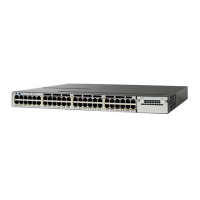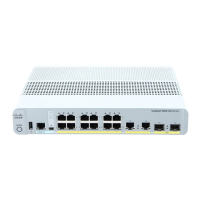ModificationRelease
This command was modified. The command was expanded for use on PPP over
ATM (PPPoA) interfaces and certain ATM interfaces.
12.2(8)T
This command was integrated into Cisco IOS Release 12.2(33)SRA.12.2(33)SRA
This command is supported in the Cisco IOS Release 12.2SX train. Support in
a specific 12.2SX release of this train depends on your feature set, platform, and
platform hardware.
12.2SX
This command was modified. Support was provided on the tunnel interface.15.1(3)T
Usage Guidelines
Prior to Cisco IOS Release 12.2(8)T, the ip address dhcp command could be used only on Ethernet
interfaces.
Note
The ip address dhcp command allows any interface to dynamically learn its IP address by using the DHCP
protocol. It is especially useful on Ethernet interfaces that dynamically connect to an Internet service provider
(ISP). Once assigned a dynamic address, the interface can be used with the Port Address Translation (PAT)
of Cisco IOS Network Address Translation (NAT) to provide Internet access to a privately addressed network
attached to the device.
The ip address dhcp command also works with ATM point-to-point interfaces and will accept any
encapsulation type. However, for ATM multipoint interfaces you must specify Inverse ARP via the protocol
ip inarp interface configuration command and use only the aa15snap encapsulation type.
Some ISPs require that the DHCPDISCOVER message have a specific hostname and client identifier that is
the MAC address of the interface. The most typical usage of the ip address dhcp client-id interface-type
number hostname hostname command is when interface-typeis the Ethernet interface where the command
is configured and interface-type numberis the hostname provided by the ISP.
A client identifier (DHCP option 61) can be a hexadecimal or an ASCII value. By default, the client identifier
is an ASCII value. The client-id interface-type numberoption overrides the default and forces the use of the
hexadecimal MAC address of the named interface.
Between Cisco IOS Releases 12.1(3)T and 12.2(3), the client-id optional keyword allows the change of
the fixed ASCII value for the client identifier. After Release 12.2(3), the optional client-id keyword forces
the use of the hexadecimal MAC address of the named interface as the client identifier.
Note
If a Cisco device is configured to obtain its IP address from a DHCP server, it sends a DHCPDISCOVER
message to provide information about itself to the DHCP server on the network.
If you use the ip address dhcp command with or without any of the optional keywords, the DHCP option 12
field (hostname option) is included in the DISCOVER message. By default, the hostname specified in option
12 will be the globally configured hostname of the device. However, you can use the ip address dhcp hostname
hostname command to place a different name in the DHCP option 12 field than the globally configured
hostname of the device.
Command Reference, Cisco IOS XE Everest 16.5.1a (Catalyst 3650 Switches)
167
ip address dhcp
